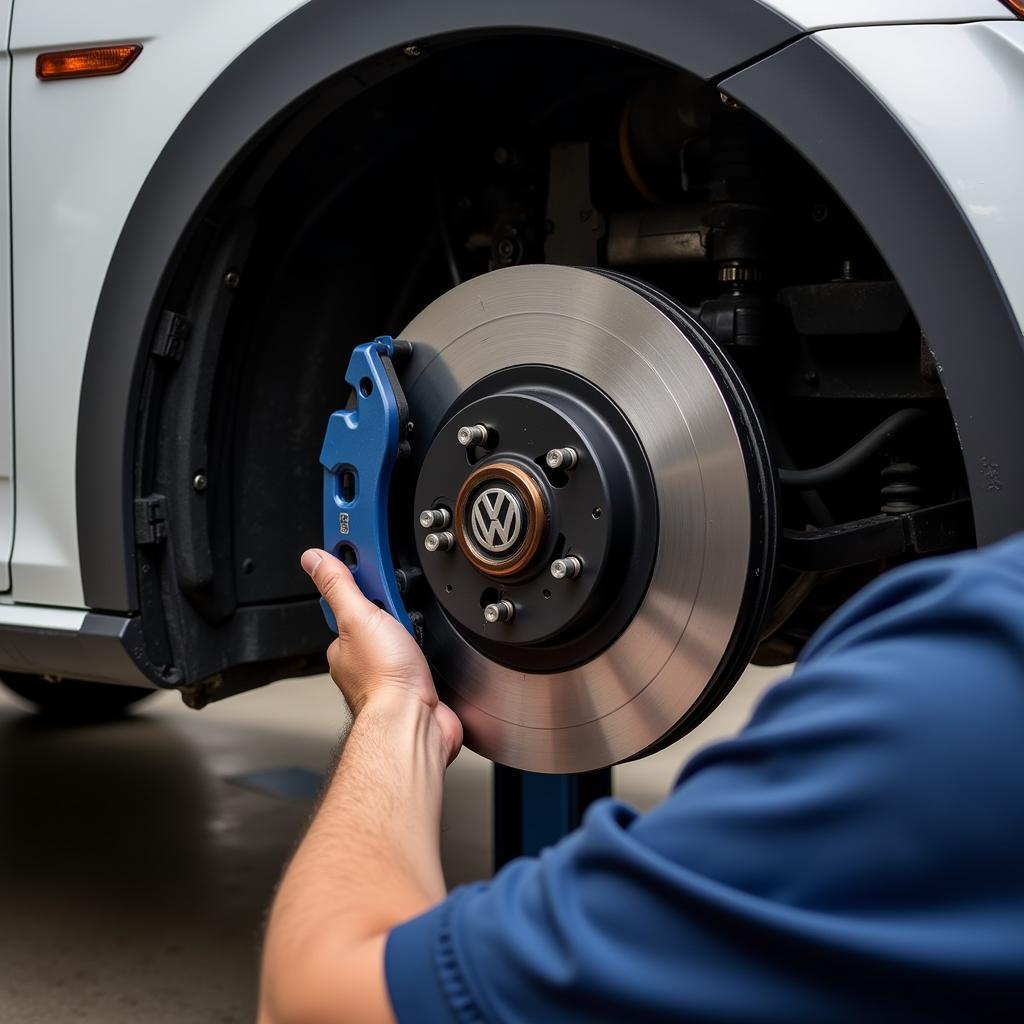A Can-Am brake warning message flashing on your dashboard can be a nerve-wracking experience. Whether you’re an off-road enthusiast or rely on your Can-Am for work, understanding what triggers this warning and how to address it is crucial for your safety and the longevity of your vehicle. This comprehensive guide will walk you through the common causes of Can-Am brake warning messages, troubleshooting steps, and when to seek professional assistance.
Decoding the Can-Am Brake Warning System
Your Can-Am is equipped with a sophisticated onboard computer system that constantly monitors vital components, including the braking system. When it detects an anomaly, the system triggers a warning message on your dashboard. Unlike a check engine light that can indicate a range of issues, the brake warning light specifically points to problems within your braking system. This could range from something as simple as a low brake fluid level to more complex issues like faulty sensors or a malfunctioning ABS module.
Common Causes of a Can-Am Brake Warning Message
Understanding the potential triggers behind the brake warning message is the first step towards resolving the issue. Here are some of the most common culprits:
- Low Brake Fluid: Brake fluid is the lifeblood of your Can-Am’s braking system. Over time, brake pads wear down, and the fluid level naturally decreases. If the fluid level drops below a safe threshold, the warning light will illuminate.
- Worn Brake Pads: Just like any vehicle, Can-Am brake pads wear down with use. Thin brake pads reduce braking efficiency and can trigger the warning message, urging you to replace them.
- Faulty Brake Light Switch: The brake light switch activates your brake lights when you press the brake pedal. A malfunctioning switch can disrupt this signal and trigger the warning message.
- ABS Sensor Issues: Anti-lock Braking System (ABS) sensors monitor wheel speed and help prevent wheel lockup during hard braking. A dirty, damaged, or faulty ABS sensor can disrupt the system and activate the warning light.
- Malfunctioning ABS Module: The ABS module is the brain behind your anti-lock braking system. While rare, a faulty ABS module can lead to a cascade of issues, including a persistent brake warning message.
Troubleshooting a Can-Am Brake Warning Message
Before rushing to a mechanic, you can perform some basic troubleshooting steps to identify the root cause of the brake warning message:
- Check Your Brake Fluid Level: Locate the brake fluid reservoir under the hood (refer to your owner’s manual for the exact location) and check the fluid level. If it’s below the minimum mark, top it up with the recommended brake fluid type.
- Inspect Your Brake Pads: Visually examine your brake pads through the wheels. If they appear thin or worn down, it’s time for a replacement.
- Inspect the Brake Light Switch: Locate the brake light switch above the brake pedal. Ensure it’s properly connected and functioning correctly. You can test this by pressing the brake pedal and verifying if the brake lights illuminate.
- Check for Diagnostic Trouble Codes: Many newer Can-Am models offer a diagnostic mode that displays trouble codes. Consult your owner’s manual for instructions on accessing this mode.
 Inspecting brake fluid level in a Can-Am
Inspecting brake fluid level in a Can-Am
When to Seek Professional Help
While the troubleshooting steps above can address some common issues, it’s essential to recognize when professional intervention is necessary. If you encounter any of the following scenarios, it’s best to consult a qualified Can-Am mechanic:
- The warning message persists after trying the troubleshooting steps.
- You’re uncomfortable performing the troubleshooting steps yourself.
- You suspect a complex issue like a faulty ABS module.
Maintaining Your Can-Am’s Braking System
Prevention is always better than cure. Regular maintenance is key to preventing brake-related issues and ensuring the longevity of your Can-Am’s braking system. Here are some essential maintenance practices:
- Regularly check and top up your brake fluid.
- Replace your brake pads as per the manufacturer’s recommendations.
- Inspect your brake lines for leaks or damage.
- Have your braking system professionally inspected annually or as needed.
Expert Insight
“Many Can-Am owners overlook the importance of regular brake system maintenance,” says veteran ATV mechanic, John Riley. “Regular inspections and timely replacements can prevent minor issues from escalating into costly repairs and ensure your safety on the trails.”
Conclusion
A Can-Am brake warning message shouldn’t be ignored. Understanding its potential causes, performing basic troubleshooting, and seeking professional help when needed will ensure your Can-Am’s braking system remains in optimal condition, keeping you safe and ready for your next adventure.

